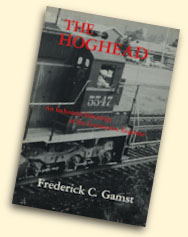

The Golden Spike Tower was constructed over a period of eleven years at a total cost of $6 million. It is located on N. Homestead Road about 4 miles from downtown North Platte, NE, and opened on 16th June 2008.
Although it is not as tall as originally intended, the tower still provides great views of Union Pacific's Bailey Yard. This is the largest reclassification yard in the world, and is named in honour of Ed. H. Bailey, who was president of Union Pacific between 1965 and 1971.
There is also a gift shop on the ground floor of the tower and various events are held throughout the year, including a corn maze in the autumn!

1866 Union Pacific track reaches North Platte - 1948 West Retarder Yard opens - 1968 East Hump Yard opens - 1971 Diesel shop opens - 1973 "One-spot" repair facility opens - 1979 Command Center opens - 1980 West Hump Yard opens - 1991 Run through fuel pads open - 1994 Eastbound fuel facility opens - 1995 New westbound fuel facility opens - 1995 Bailey Yard recognised by the Guinness Book of Records as the world's largest rail yard - 2003 Remote controlled hump locomotives arrive - 2008 the Golden Spike Tower opens.
2,850 acres in size - 8 miles long - 2 miles wide - 315 miles of track - operates 24 hours a day 365 days a year - 130 trains dispatched on average every day - 13,000 rail cars flow in and out daily - 749 turnouts - 985 switches - 1,300,000 ties - 21,000 cars humped every 24 hours - 2,600 UP employees located at the yard (1,200 in train service) - $100,000,000 annual wage bill - 350 locomotives serviced every day - 83 locomotives repaired daily - 20,000,000 gallons of diesel fuel used each month - 10,000 pairs of wheels replaced each year.
The seven acre Diesel Shop has eleven tracks, sixteen remote controlled overhead cranes and two drop tables. It can house thirty-eight units. Six hundred employees work shifts on 55-60 engines at a time, either inside or on outside service tracks, repairing 25-30 units per shift. Units enter from the east and move west as work progresses.
Maintenance of Way
Sand Tower
East Hump Tower
Eastbound Run Through and Service Facility
GE has a shop at Bailey, servicing six units daily.
Traffic is sorted in the Eastbound Receiving Yard, and one to three cars are then shoved over the 32' high hump at a time into the sixty-four track eastbound "bowl" or classification yard below.
Beyond, a nineteen track Spare Yard holds newly repaired coal cars to be swapped out for damaged cars found on arriving trains.
The ten track Westbound Departure Yard is on this side of the eighteen track Westbound Run Through Yard, which has its own service facility.
The 20' high West Hump and Control Tower. Unmanned hump locomotives are operated from a remote by switchmen. Radar detectors measure the cars' speed and apply retarders if they run too fast. They need to be slowed to 1.6 mph for coupling in the "bowl" to form outbound trains.
On the North and South Pullback Tracks, cars wait to go over the West Hump.
The forty-nine track "bowl" of the Westbound Classification Yard
The ten track Westbound Receiving Yard. Cars arrive here before moving onto the Pullback Tracks and going over the West Hump.
On the day I took these shots, UP FEF-3 #844 (a 4-8-4 Northern type) swept through on one of the three main lines after spending the weekend at a North Platte Railfest.
Rows of refrigerator cars are lined up on the Union Pacific Fruit Express Cleaning Tracks. Fifty-one employees at Bailey are responsible for keeping UPFE's four thousand, nine hundred and fifty refrigerator cars moving, monitoring all the cars by satellite, arranging for problems to be dealt with on the road as well as at Bailey Yard.
One Spot Repair Yard and Shop with three fully equipped "one-spot" tracks, repairs an average of fifty cars daily.
West Trim Tower
Route Selection Tower
Buffalo Bill Viaduct over the UP lines in west North Platte.
The Supply Department for the repair shop. It also holds spares for out of warranty units.
A four track service facility stands alongside the repair shop for inspection, lubrication and refuelling. It can hold twenty-four locomotives at a time.
Units enter the repair and servicing area on the Locomotive Support and Storage tracks.
Keeping the yard working are two switch gangs, two welding gangs, a surfacing gang and five section gangs on call 24/7.
Building eastbound trains is done in the Eastbound Trim Tower. Once "trimmed" in the Eastbound Classification Yard, the trains are moved to the Eastbound Departure Yard.
The Main Office and Bailey Command Center is the heart of the yard. Operations are
co-ordinated from here, maintenance work is scheduled and any problems are addressed.
The six Eastbound Departure Yard tracks. Trains leave here for over forty destinations. Westbound trains leave the Westbound Departure Yard for twenty-seven different destinations.
North Platte
Click on a bullseye to open a close up photograph
Right click and "save as" here to download this panorama (1.3MB)
Right click and "save as" here to get a high definition version (5.9MB)
Related Links:
Golden Spike Tower Website
Union Pacific Bailey Yard Pages
Send a comment or query, or request permission to re-use an image.
The July 2010 edition of Trains included a great feature article on Bailey Yard (click on the cover of the magazine to go to the website).

Although published in 1980, Frederick C. Gamst's The Hoghead (Holt, Rhinehart and Wilson) is still a great book about the life of an engineer on a major US railroad (click on the cover to search for this book on Bookfinder.com).






